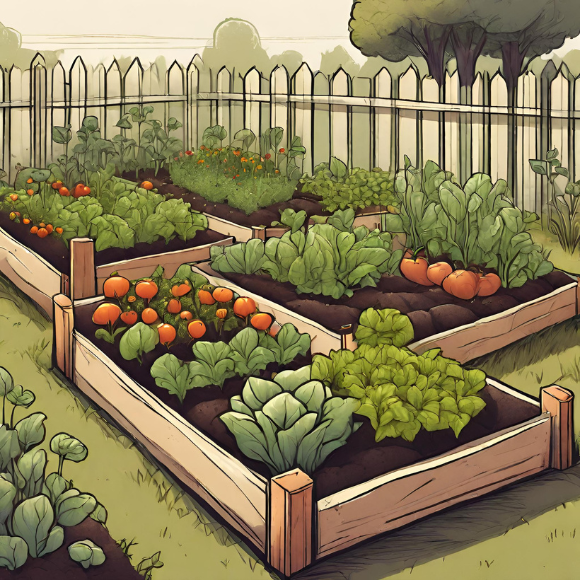Raised bed gardening is a method that has been beloved by gardeners for decades. This type of gardening involves creating garden beds that are raised above the natural ground level, often framed with wood, stones, or concrete. Not only does this method help with soil and pest control, but it also reduces the need for bending and kneeling, making gardening accessible to more people. In this chapter, we’ll cover the basics of raised bed gardening and why it could be the perfect choice for your garden.

WHY CHOOSE RAISED BED GARDENING?
Raised bed gardening offers numerous advantages over traditional ground-level gardening. The elevated soil warms up faster in the spring, extending your growing season. The loose, fertile soil in raised beds also allows for better root penetration, which in turn can lead to higher yields in your vegetable or flower garden.
Moreover, raised beds can solve many soil-related problems. For instance, if your garden area has poor, heavy clay soil, a raised bed filled with high-quality soil mix can provide a superior environment for your plants to thrive. Additionally, because raised beds are filled with fresh soil, the risk of soil-borne diseases is significantly reduced.
Another major advantage of raised bed gardening is the convenience it offers. Raised beds are easier to access, making planting, weeding, and harvesting less strenuous. This can be particularly beneficial for senior gardeners or those with physical limitations.
PLANNING YOUR RAISED BED GARDEN
The first step in creating a raised bed garden is deciding where to place your beds. Most plants thrive in locations with full sun (6-8 hours of sunlight per day), so choose a sunny spot in your yard. Ensure that the location has easy access to water and is not in a low spot where water can accumulate and cause your beds to become waterlogged.
In terms of size, a width of 4 feet is generally recommended for raised beds. This width allows you to easily reach into the bed from either side without stepping on the soil. The length of the bed can be as long or as short as you want, but a length of 6-8 feet is common.
The height of the raised bed can vary depending on your needs. If bending and kneeling are issues, a height of 2 feet can make gardening tasks much easier. For those who prefer to garden while seated, a height of 3 feet can be ideal. If mobility isn’t an issue, a height of 6 to 12 inches can work well.
When it comes to the layout of the beds, leave enough space between the beds to comfortably move around. A pathway of at least 2 feet between each bed is usually sufficient.
CHOOSING THE RIGHT MATERIALS FOR YOUR RAISED BED
When constructing your raised beds, you have a variety of material options. Wood is a popular choice because of its natural appearance and relatively low cost. If you opt for wood, choose a type that’s rot-resistant like cedar or redwood. Avoid pressure-treated wood, as it can leach chemicals into the soil.
Concrete blocks, bricks, or stones can also be used to create sturdy, long-lasting raised beds. These materials can be more expensive and require more effort to install, but they add a beautiful, permanent structure to your garden.
Another option is to use prefabricated raised bed kits that are available in various sizes and materials. These kits can be a good option if you’re looking for an easy and quick setup. No matter what material you choose.




